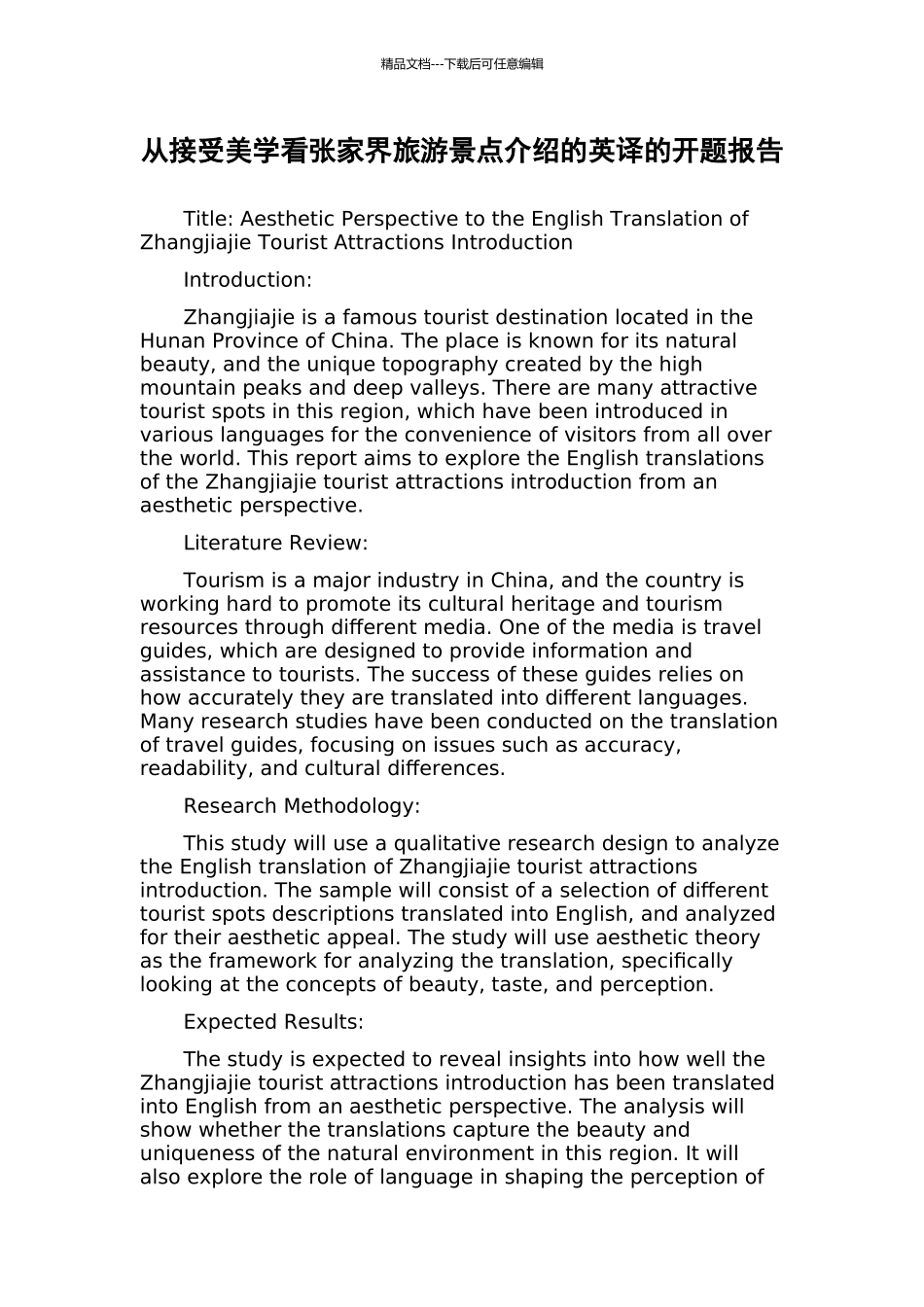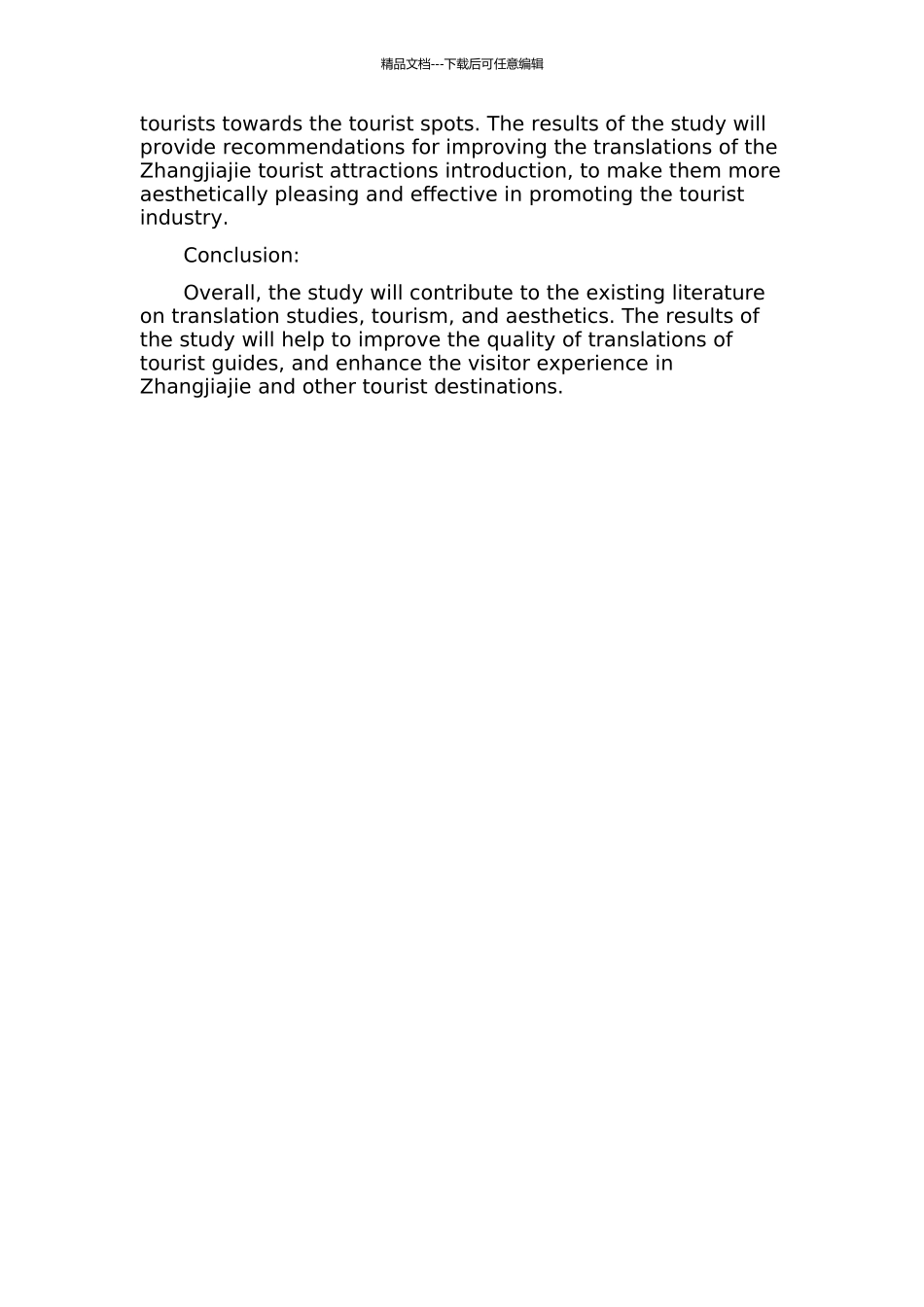精品文档---下载后可任意编辑从接受美学看张家界旅游景点介绍的英译的开题报告Title: Aesthetic Perspective to the English Translation of Zhangjiajie Tourist Attractions IntroductionIntroduction:Zhangjiajie is a famous tourist destination located in the Hunan Province of China. The place is known for its natural beauty, and the unique topography created by the high mountain peaks and deep valleys. There are many attractive tourist spots in this region, which have been introduced in various languages for the convenience of visitors from all over the world. This report aims to explore the English translations of the Zhangjiajie tourist attractions introduction from an aesthetic perspective.Literature Review:Tourism is a major industry in China, and the country is working hard to promote its cultural heritage and tourism resources through different media. One of the media is travel guides, which are designed to provide information and assistance to tourists. The success of these guides relies on how accurately they are translated into different languages. Many research studies have been conducted on the translation of travel guides, focusing on issues such as accuracy, readability, and cultural differences.Research Methodology:This study will use a qualitative research design to analyze the English translation of Zhangjiajie tourist attractions introduction. The sample will consist of a selection of different tourist spots descriptions translated into English, and analyzed for their aesthetic appeal. The study will use aesthetic theory as the framework for analyzing the translation, specifically looking at the concepts of beauty, taste, and perception.Expected Results:The study is expected to reveal insights into how well the Zhangjiajie tourist attractions introduction has been translated into English from an aesthetic perspective. The analysis will show whether the translations capture the beauty and uniqueness of the natural environment in this region. It will also explore the role of language in shaping the perception of 精品文档---下载后可任意编辑tourists towards the tourist spots. The results of the study will provide recommendations for improving the translations of the Zhangjiajie tourist attractions introduction, to make them more aesthetically pleasing and effective in promoting the tourist industry.Conclusion:Overall, the study will contribute to the existing literature on translation studies, tourism, and aesthetics. The results of the study will help to improve the quality of translations of tourist guides, and enhance the visitor experience in Zhangjiajie and other tourist destinations.

